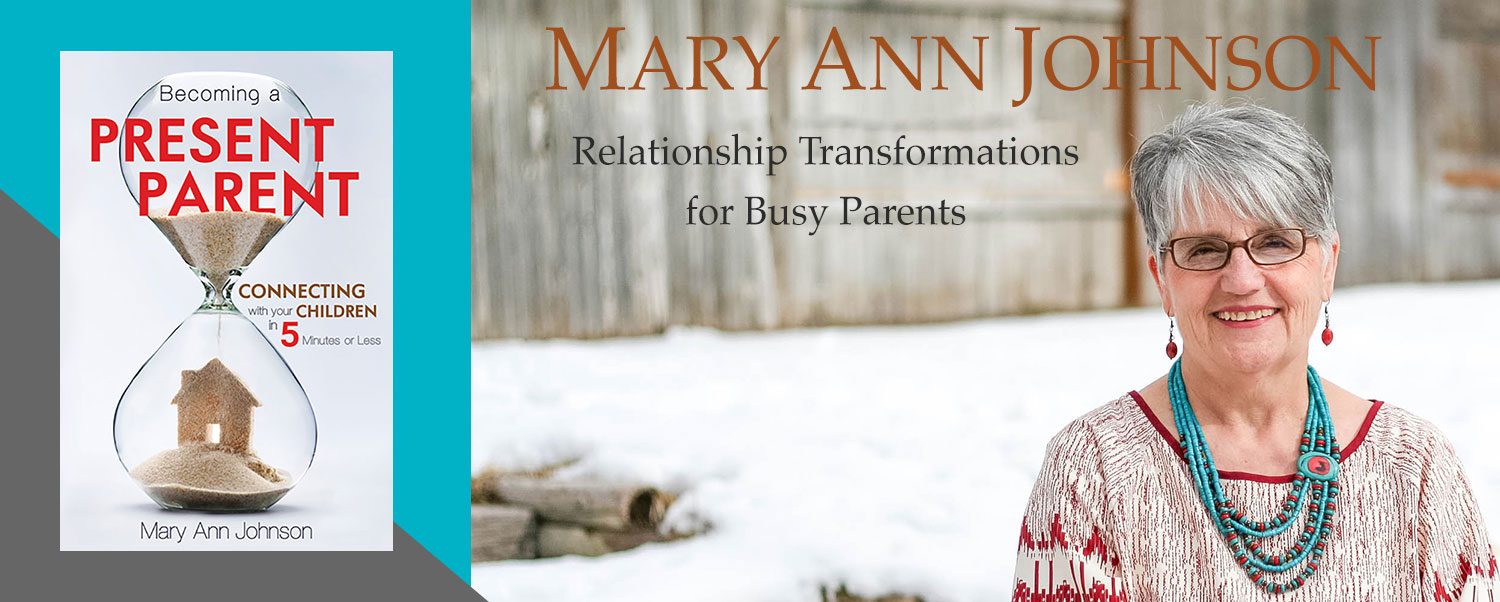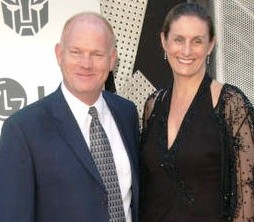
As much as we love summer and our kids both can challenge our patience and our energy. My new book – Becoming a Present Parent: Connecting with your children in five minutes or less teaches you how to use touchpoints to connect with your kids. What is a touchpoint – the point at which one person feels seen and heard by another person; when they know they matter. Most touchpoints, there are eight of them, happen daily and many require five minutes or less. Let me share one touchpoint that will really sweeten the summer pie!
TOUCHPOINT 4 – Chores and Family Work
Thinking about the word WORK can make a parent groan inside because work is often a point of contention in a family. But work can be a place where we create a touchpoint rather than a point of contention if building relationships are our ultimate goal.
CHORES
Often we get so involved in the management portion of family life that it’s difficult to address the relationship portion. But when we’re Present things work out better.
Everyone wants support when facing a tough job. No one wants to be isolated in a mess. We sometimes forget our kids feel the same way we do.
Moms have had the experience of walking into a disaster of a kitchen after a long day. Your family’s watching TV, and here you are, in this messy kitchen. Where do you start?
How does it feel when your husband abandons his show, comes in and begins helping you pick up? And how does it feel when he also asks you how your day went? It’s amazing!
This happens to dads in garages and backyards. How does it feel when your seventeen-year-old volunteers to help get the backyard in order? How about when your thirteen-year-old offers to spend time helping you organize the garage? It feels better, doesn’t it?
When a child is faced with what seems like a daunting task, check on them. Put your hand on their back or rub a shoulder and say, “Let me give you a hand.” Help them for 2-3 minutes while having a mini-conversation. Then head off to the next child or to your own work. It makes all the difference in how chores feel and in how well they get done. It solidifies relationships. It allows you to be Present with your child for a few minutes.
Chores can be a touchpoint!
You can get more details on how to make chores a touchpoint rather than a point of contention in your home in Chapter four of the book and you can read it for FREE.
FAMILY WORK
Family work is another time when you can create a touchpoint rather than a point of contention. When working as a family we need to keep in mind the objective isn’t just to get another item off the to-do list – we’re creating relationships and bonding our family.
I love gardening alone. I love the quiet and feeling the dirt in my fingers. But I understand it’s an opportunity for me to teach and connect with my grandchildren. Gardening can be transformed into an enduring memory for us all when I remember the garden isn’t what’s important, the relationship is.
Add fun to any work you do as a family – sing, dance as you clean, play great music, tell jokes, laugh, have mini-conversations and lots of random touches.
Things aren’t going to work out all of the time. You’ll have family work that turns into chaos or contention. We’re all imperfect, we get tired, and we have grouchy moments. It’s inevitable. But what if you could make family work more pleasant even one-quarter of the time?
If you can be Present as you work together even one-quarter of the time, your family members will feel supported and relationships will be built. You’ll experience GREAT results in the happiness level of your family.
Learn about the other seven family touchpoints. Read chapter four, Touchpoints, FREE
Happy Summer,
Mary Ann




 July 10 was officially named National Teddy Bears’ Picnic Day in 1988. Why not celebrate July 10th with your family and have a beary good time! You will find some teddy bear picnic ideas in this article to get you started.
July 10 was officially named National Teddy Bears’ Picnic Day in 1988. Why not celebrate July 10th with your family and have a beary good time! You will find some teddy bear picnic ideas in this article to get you started.
 Have you ever noticed that when we’re having trouble with our spouse, neighbor or our children we begin to wonder what we can “do” to make the situation better? Can we devise a new system, have a good old-fashioned “talk it out” session or come up with a consequence/reward and so forth.
Have you ever noticed that when we’re having trouble with our spouse, neighbor or our children we begin to wonder what we can “do” to make the situation better? Can we devise a new system, have a good old-fashioned “talk it out” session or come up with a consequence/reward and so forth. This good, loving mother shared with me that her son is needy, sometimes whiny, and doesn’t respond when asked to do something. He doesn’t like being directed. It’s frankly annoying. The energy between them is not positive and she is short with him.
This good, loving mother shared with me that her son is needy, sometimes whiny, and doesn’t respond when asked to do something. He doesn’t like being directed. It’s frankly annoying. The energy between them is not positive and she is short with him. works PERFECTLY. When she gives him a heads up about a change in the schedule it works PERFECTLY. And as for random touches….well that is making ALL the difference. Not just for her seven-year-old, but for all of her children.
works PERFECTLY. When she gives him a heads up about a change in the schedule it works PERFECTLY. And as for random touches….well that is making ALL the difference. Not just for her seven-year-old, but for all of her children.

 God must have wanted to see how serious I was about the question because I prayed that same prayer every day for three months! Then one night I knew the answer – stop complaining!
God must have wanted to see how serious I was about the question because I prayed that same prayer every day for three months! Then one night I knew the answer – stop complaining! made a serious decision to become a more charitable person, less judgmental. That has been a work in progress too. Here is how they’re connected.
made a serious decision to become a more charitable person, less judgmental. That has been a work in progress too. Here is how they’re connected.






 In 2011 I had the extraordinary opportunity to interview Glen Morshower – Agent Aaron Pierce, from the Fox hit “24. I had attended an event he spoke at and I was riveted by his humor, wisdom and pure joy in living. So I plucked up my courage and asked him for an interview that I could share with the mothers and fathers I work with. He said he would be glad to and gave me his phone number. I never called.
In 2011 I had the extraordinary opportunity to interview Glen Morshower – Agent Aaron Pierce, from the Fox hit “24. I had attended an event he spoke at and I was riveted by his humor, wisdom and pure joy in living. So I plucked up my courage and asked him for an interview that I could share with the mothers and fathers I work with. He said he would be glad to and gave me his phone number. I never called.



 Father’s Day is coming so I am going to dedicate this space to fathers for a few weeks. : )
Father’s Day is coming so I am going to dedicate this space to fathers for a few weeks. : )